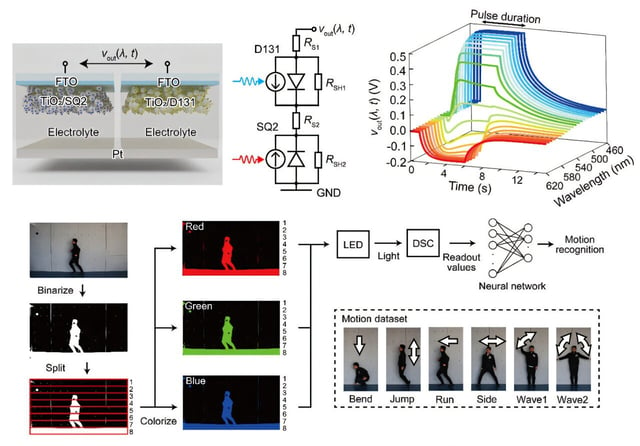Overview
- The research, published May 12 in Scientific Reports, introduces an optoelectronic synapse that self-powers through solar energy conversion.
- Dual dye-sensitized solar cells produce bipolar voltage responses—positive for blue light and negative for red—to emulate human wavelength discrimination.
- With color resolution of 10 nanometers across the visible spectrum, the synapse performs complex logic operations without multiple conventional components.
- Integrated into a physical reservoir computing framework, the device classified 18 human movements with 82% accuracy using a single synapse.
- Potential applications span autonomous vehicles, wearable healthcare sensors and consumer electronics by enabling low-power, high-precision machine vision.
